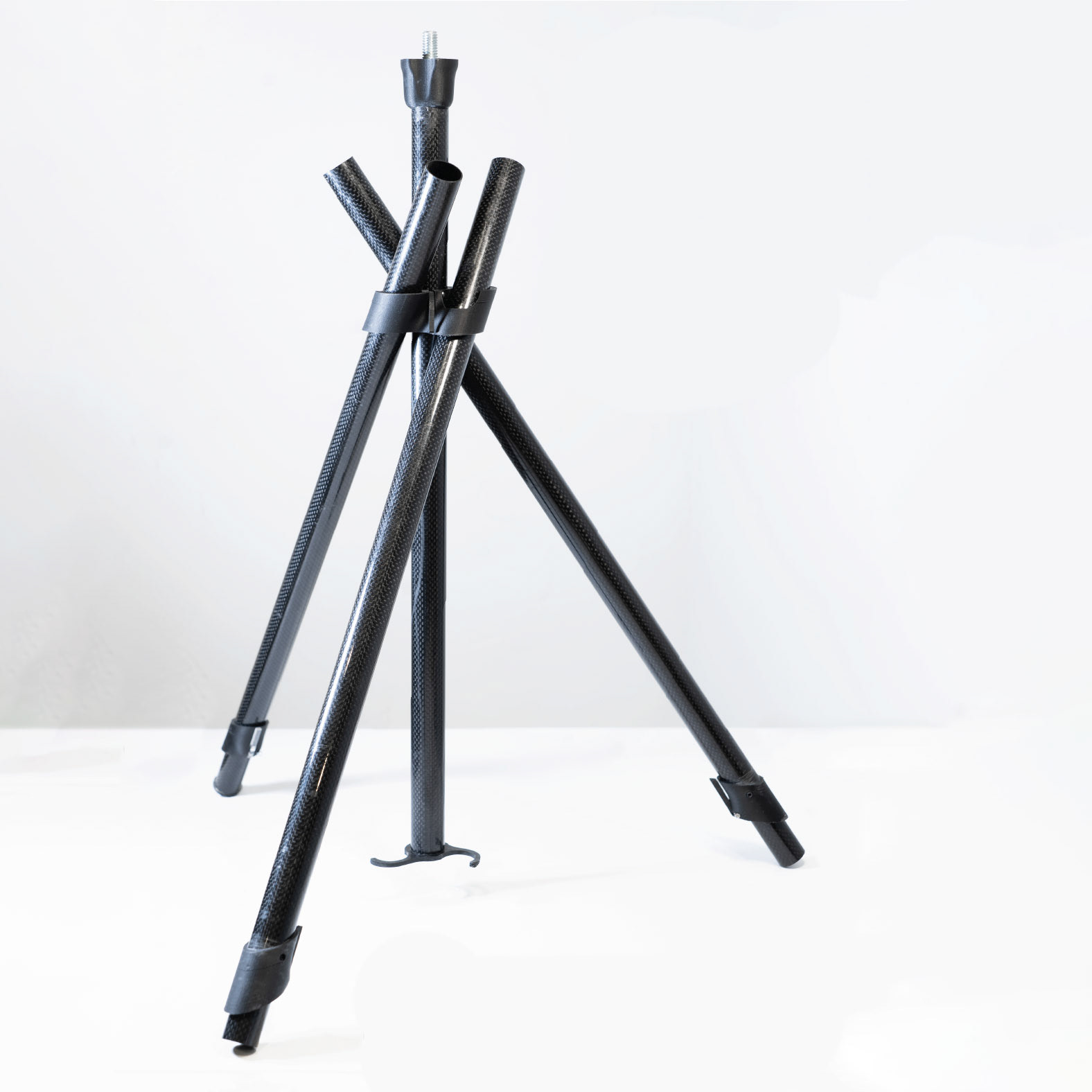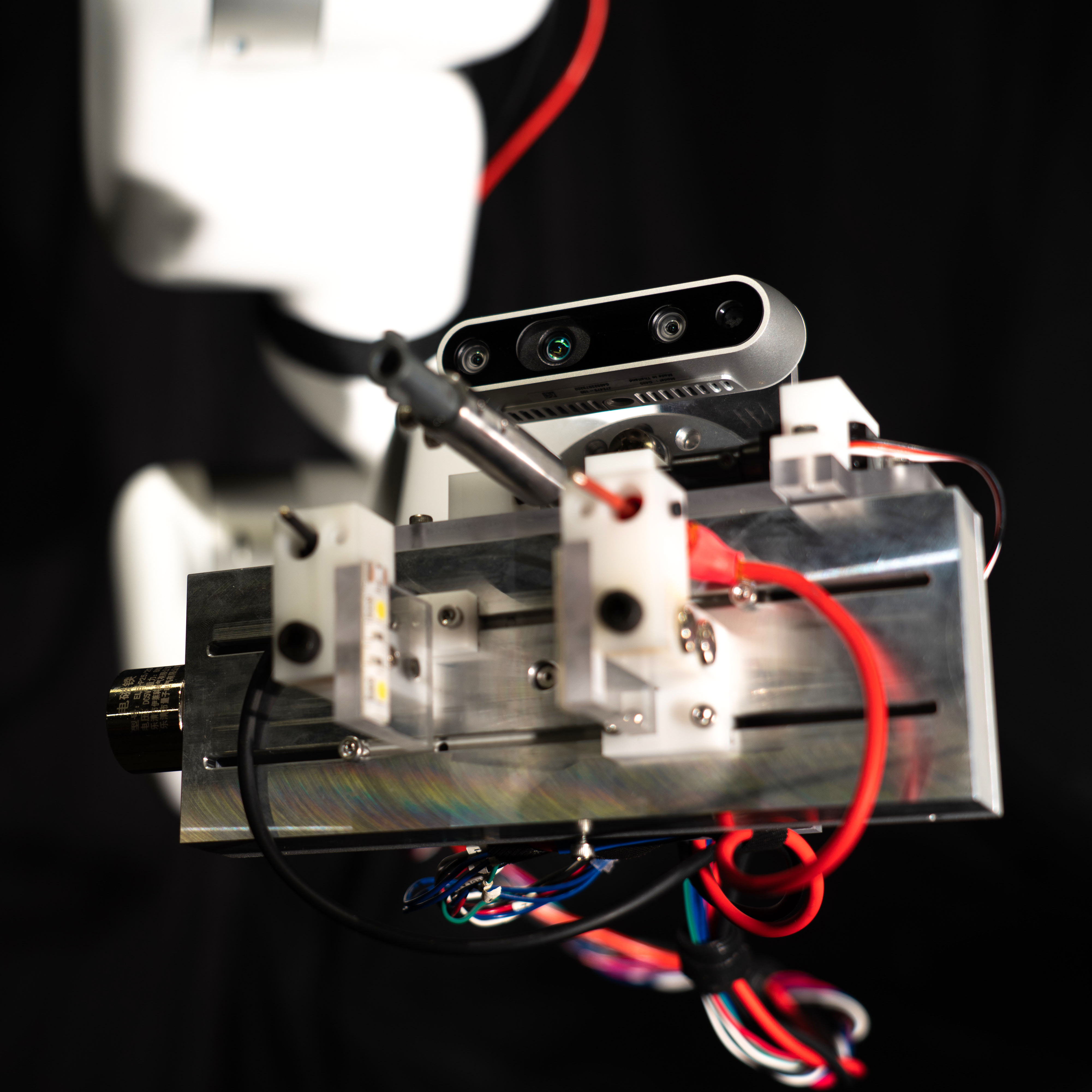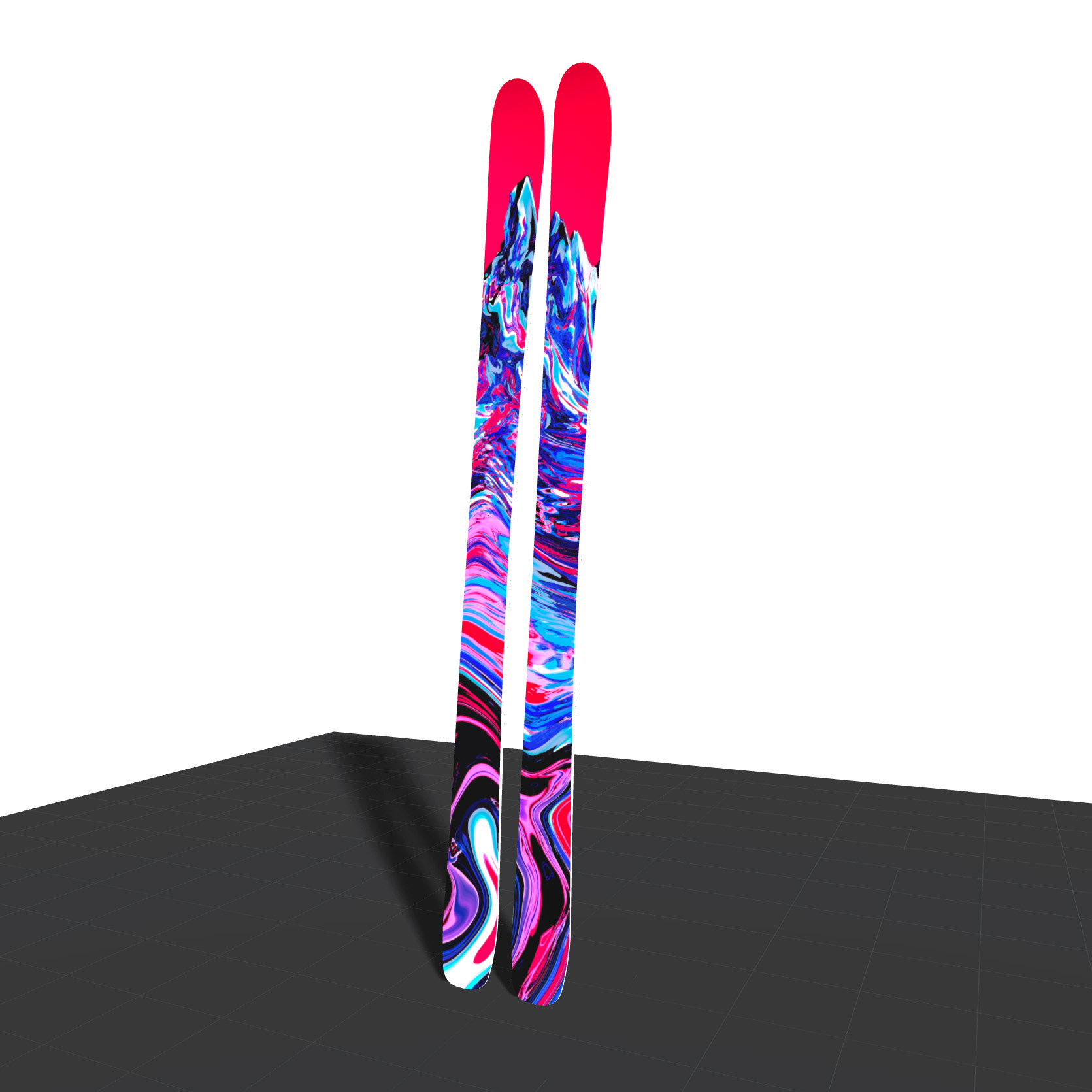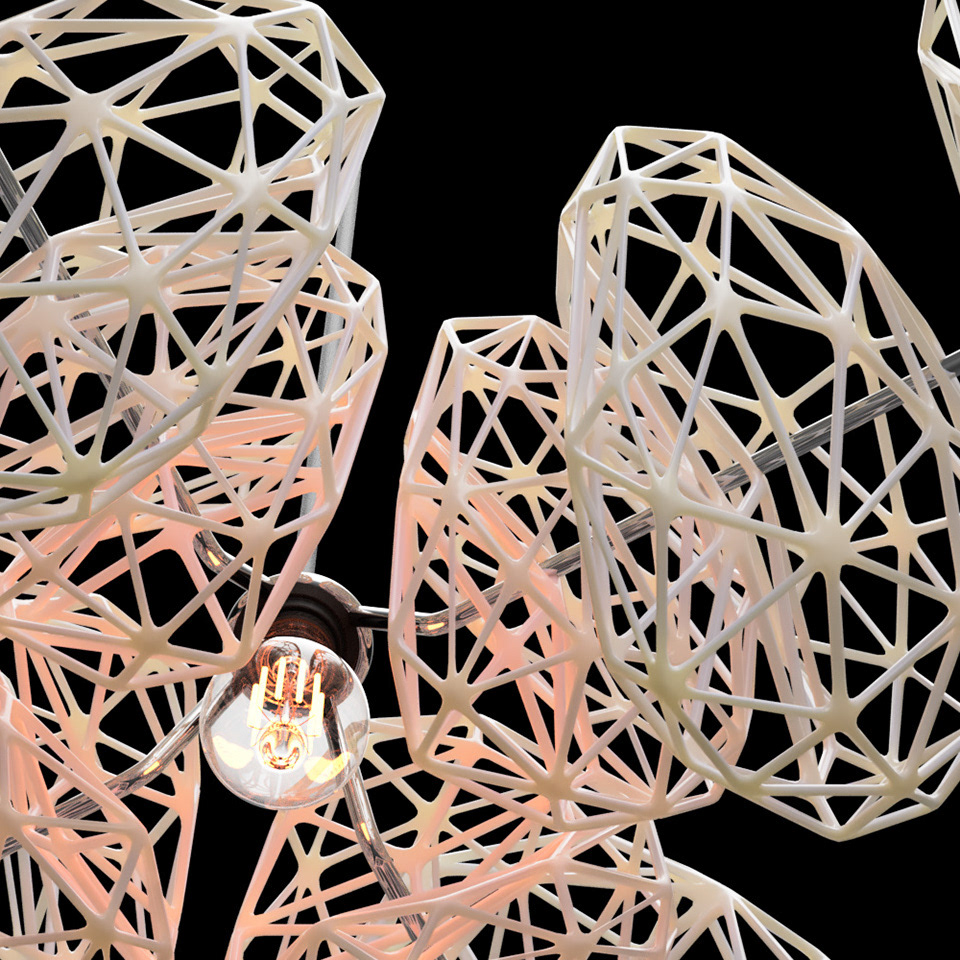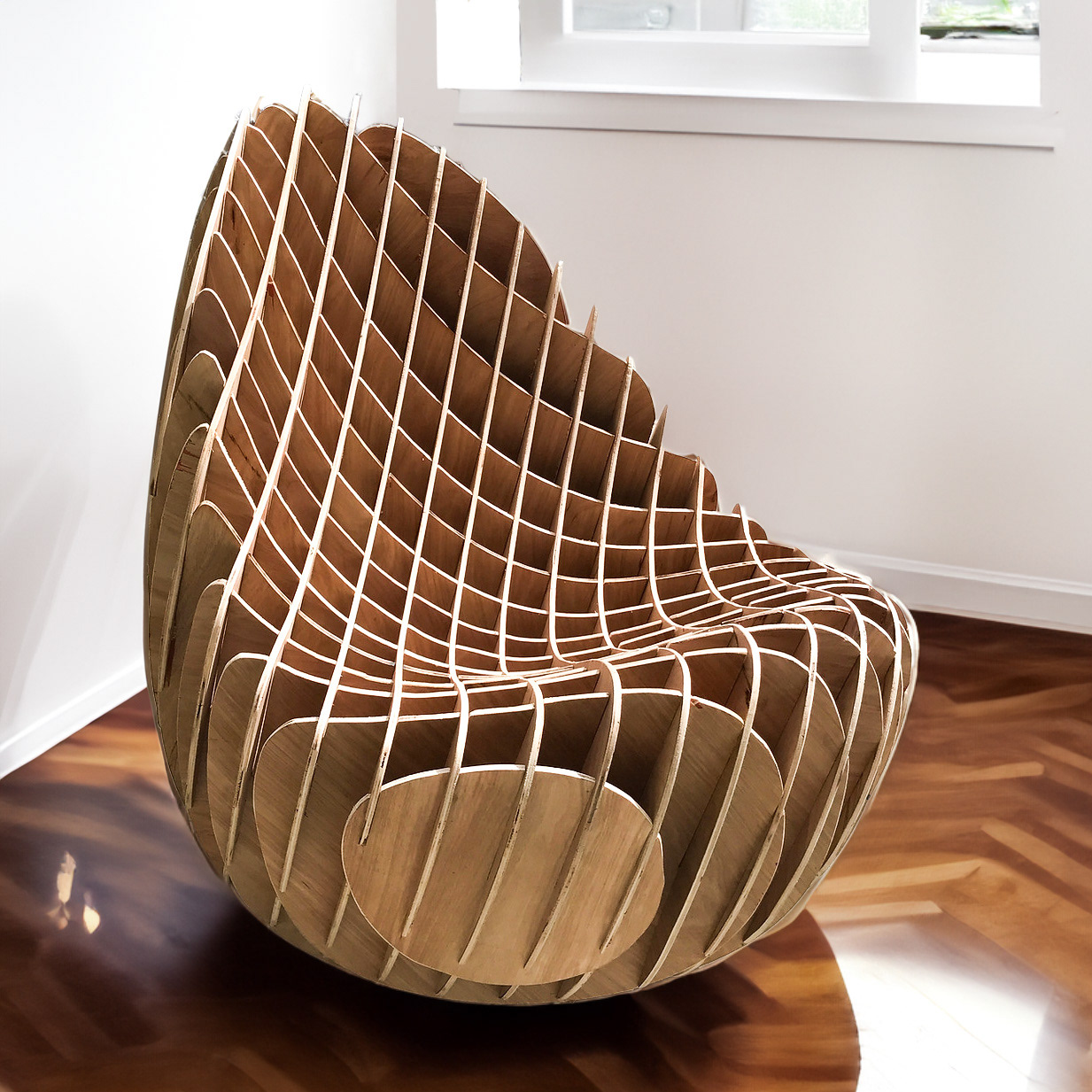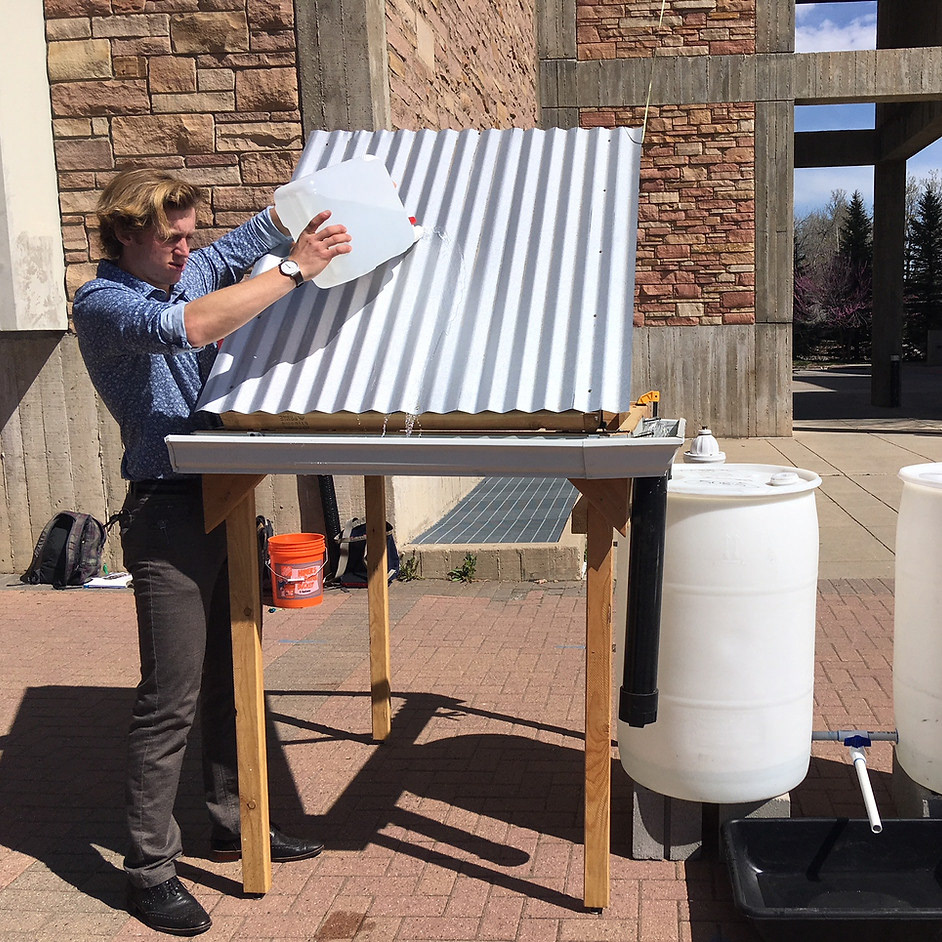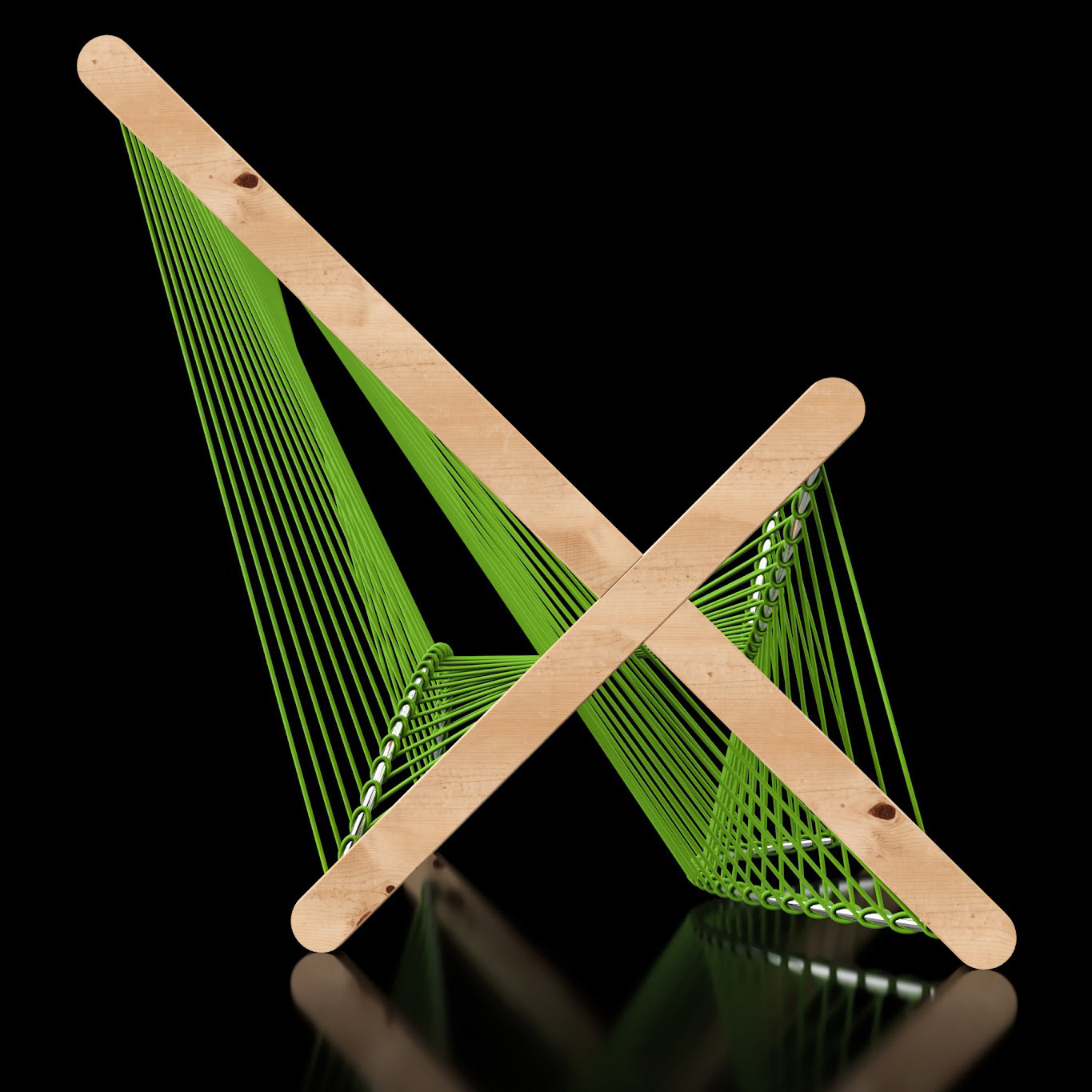ABIOGENESIS is a series of generatively designed light fixtures inspired by the growth patterns of coral reefs.
All living things are the result of many forces from their environment. In order to survive and grow, they are constantly pushed to adapt to meet many, often contradictory, goals. This results in wildly complex and intricate organic forms, all driven by the need to optimize to fit their particular ecological niche.
With this project, I wanted to capture this interplay of goals and constraints to create forms that feel authentically organic and alive. Instead of modeling the shape we see, I was interested in modeling the environment that led to that shape, and allowing a form to 'grow' in simulation. The end result is a series of unique 3D printed light fixtures that diffuse light through their organic folds and features.
Specifically I was inspired by coral reefs, and the constraints offered by their environment. The coral needs to maximize its surface area to gather nutrients and allow their algae to photosynthesize, but they are constrained to a small space by other coral growing nearby.
I used Rhino and Grasshopper to model this process. The program continuously attempts to maximize the length of a curve while minimizing its overall area footprint. Each iteration of the curve is then stacked on the previous one to make the 3D form. Each time the program is run, the algorithm finds a new solution to the problem, creating a unique shape for each lamp.
Because the design is created from a smoothly expanding loop, the design can be 3D printed with a single layer spiraling upwards, allowing for very fast and efficient printing. After experimenting with many different 3D printing filaments, I settled on a white PLA with a nice translucent effect that shows the folds of the lamp when light shines through from the center.
Abiogenesis is a term that refers to the process by which life arises from nonliving matter
